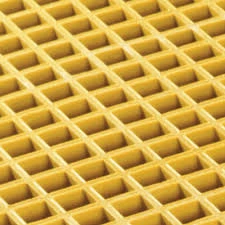loading...
- No. 9, Xingyuan South Street, Dongwaihuan Road, Zaoqiang County, Hengshui, Hebei, China
- admin@zjcomposites.com
- +86 15097380338
- Welcome to visit our website!
Durable FRP Grating for Safe and Reliable Walkway Solutions
The Benefits of Walkway FRP Grating in Modern Construction
As the construction industry evolves, so does the need for materials that can withstand harsh environmental conditions while offering durability and design versatility. Fiberglass Reinforced Plastic (FRP) grating has emerged as a leading choice for walkway systems in various applications, combining both functional and aesthetic benefits. This article explores the advantages of using walkway FRP grating in modern construction projects.
1. Superior Durability
One of the primary benefits of walkway FRP grating is its exceptional durability. Traditional materials such as steel and wood are often prone to corrosion, rotting, and weathering, particularly in challenging environments such as chemical plants, wastewater treatment facilities, and marine settings. In contrast, FRP grating is resistant to chemicals, UV exposure, and moisture, making it an ideal choice for outdoor applications or areas exposed to harsh chemicals. This longevity not only reduces the need for frequent replacements but also lowers overall maintenance costs.
2. Lightweight and Easy to Handle
FRP grating is significantly lighter than its metal counterparts. This lightweight nature makes it easier to transport, install, and modify on-site, leading to reduced labor costs and faster project completion times. Contractors can maneuver the panels without the heavy equipment often required for steel or concrete alternatives, making the installation process much more efficient.
3. Customizable Design Options
In the realm of design, walkway FRP grating offers a high degree of customization. It is available in various colors, textures, and sizes to suit different aesthetic and functional requirements. This versatility allows architects and designers to create appealing environments while ensuring safety and functionality. Whether it's maximizing daylight in a public space or maintaining a clean aesthetic in an industrial setting, FRP grating can easily adapt to the specific needs of each project.
walkway frp grating

4. Enhanced Safety Features
Safety is a paramount concern in any construction project, especially in walkways where slip hazards can lead to serious accidents. Walkway FRP grating is designed with anti-slip surfaces, which provide excellent traction even in wet or greasy conditions. This is especially important for industrial walkways, where spills or exposure to lubricants and other substances can pose serious risks. Additionally, the open-grid design of FRP grating allows for excellent drainage, reducing puddling and further enhancing safety.
5. Environmentally Friendly Solution
As sustainability becomes increasingly important in construction, FRP grating shines as an environmentally friendly option. It is often made from recycled materials and is itself recyclable at the end of its lifespan. Moreover, its durability means that less material waste is generated over time when compared to traditional walkway materials that may require more frequent replacement.
6. Cost-Effectiveness Over Time
While the initial cost of FRP grating may be higher than some other materials, its longevity, reduced maintenance needs, and ease of installation contribute to significant cost savings over time. Building owners and managers can invest in FRP grating knowing that they are making a smart, long-term decision that will pay off in reduced replacement and repair costs.
Conclusion
In conclusion, walkway FRP grating represents a superior alternative to traditional materials in modern construction. Its combination of durability, lightweight handling, design versatility, enhanced safety features, environmental sustainability, and long-term cost-effectiveness make it an ideal choice for various applications. As the industry continues to seek innovative materials that combine performance with responsibility, FRP grating is poised to play a crucial role in the future of construction. Whether for industrial, commercial, or recreational spaces, the benefits of using walkway FRP grating are clear and compelling.
-
The Rise of FRP Profiles: Strong, Lightweight, and Built to LastNewsJul.14,2025
-
SMC Panel Tanks: A Modern Water Storage Solution for All EnvironmentsNewsJul.14,2025
-
GRP Grating: A Modern Solution for Safe and Durable Access SystemsNewsJul.14,2025
-
Galvanized Steel Water Tanks: Durable, Reliable, and Ready for UseNewsJul.14,2025
-
FRP Mini Mesh Grating: The Safer, Smarter Flooring SolutionNewsJul.14,2025
-
Exploring FRP Vessels: Durable Solutions for Modern Fluid HandlingNewsJul.14,2025
-
GRP Structures: The Future of Lightweight, High-Performance EngineeringNewsJun.20,2025
